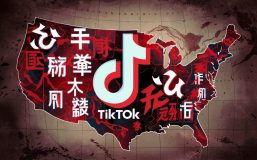The takeaway from an MIT study released Wednesday, tracking the early growth of Twitter, is that new Web technologies – particularly social networks that rely on adoption by other users – cannot depend solely on online buzz (or even Ashton Kutcher, for that matter).

The study tracked data from 2006 to 2009 in the 408 U.S. cities with the highest rates of Twitter adoption. The findings clearly demonstrate that mainstream media mentions, coupled with the geographic and socioeconomic proximity of users, fueled its growth. A video mapping the data shows initial growth in San Francisco, where Twitter is based, then spreading to Boston.
While the data is dated by Internet standards, the study does challenge the notion that the Internet has allowed social networks to ignore traditional geographic and socioeconomic boundaries.
While the data is dated by Internet standards, the study does challenge the notion that the Internet has allowed social networks to ignore traditional geographic and socioeconomic boundaries.
“The big question for people in industry is ‘How do we find the right person or hub to adopt our new app so that it will go viral?’ But we found that the lone tech-savvy person can’t do it; this also requires word of mouth. The social network needs geographical proximity,” said Marta González, assistant professor of civil and environmental engineering and engineering systems at MIT, in a statement. “In the U.S. anyway, space and similarity matter.”
While the MIT study only looked at Twitter, the broader implications are clear. From an economist’s view, the current period of free apps and Web services gives them a chance to look at why some succeed and others do not. The MIT study could also theoretically be used to understand the growth of more recent social success stories like Instagram and Spotify.
“Nobody has ever really looked at the diffusion among innovators of a no-risk, free or low-cost product that’s only useful if other people join you. It’s a new paradigm in economics: what to do with all these new things that are free and easy to share,” said MIT graduate student Jameson Toole, a co-author of the paper.
The study was also novel in that it did not keep mainstream media mentions as a constant, but instead tried to track when the media responded to user mentions and vice versa. The study, and the video, covers through April 2009, when Kutcher challenged CNN to see who would become the first to reach one million followers, bringing Twitter decidedly into the mainstream.
Each circle represents a U.S. city containing Twitter users. Circles grow in size as more users sign up in that location over time. When a location has reached a “critical mass” of users, or 13.5% of all eventual users have signed up, the location turns red. The line being drawn across the center of the screen is a time series of the number of new users that signed up across the whole country in a given week.






